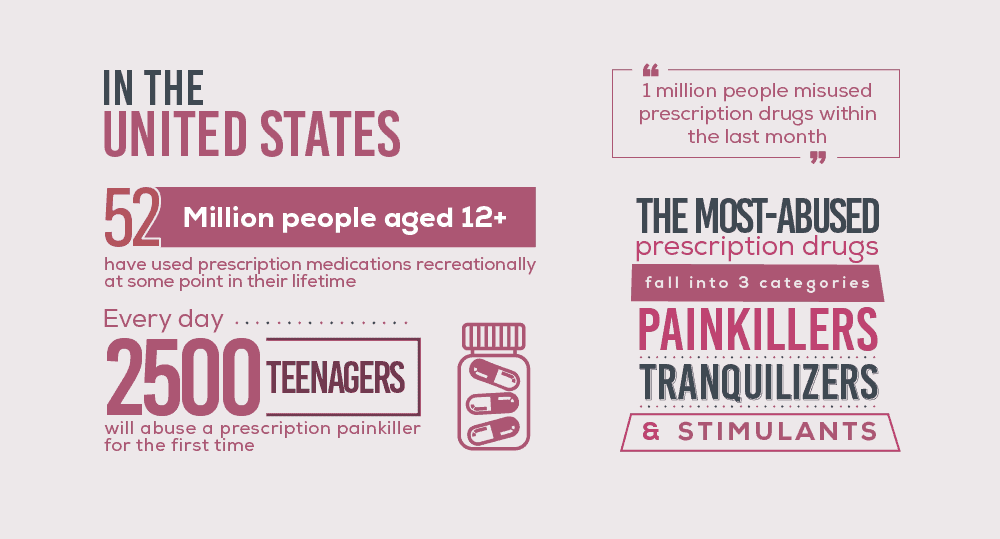“When I was in medical school, the one thing I was told was completely wrong. The one I was told was, if you give opiates to a patient who is in pain, they will not get addicted. Completely wrong. Completely wrong. But a generation of doctors, a generation of us, grew up being trained that these drugs are risky. In fact, they are risky.” ~ Dr. Thomas Frieden, Centers For Disease Control and Prevention The misuse of prescription drugs in the United States has been called “an epidemic” by the Centers for Disease Control and Prevention. Considering that the United States has just 5% of the world’s population, yet consumes 75% of all prescription drugs, “epidemic” might be a description that is unfortunately all too apt. Adding to the danger is the fact that most people feel it’s safe to take prescribed medicines because a doctor gave it to them. They don’t see the risk in taking one or two extra pills or changing their frequency, which can make it even more deadly.
“Get the help you need today. We offer outpatient assistance, so you can maintain your work, family, and life commitments while getting the help you deserve!”
Numbers Don’t Lie
Take a look at some of these frightening statistics:
- 52 million people in the United States aged 12 or older have used prescription medications for nonmedical reasons at some point in their lifetime
- 1 million Americans have misused prescription drugs within the last month alone
- in 2010, enough prescription pain pills were prescribed to effectively medicate every adult in the country every four hours for a solid month
- every day in the United States, 2500 teenagers will abuse a prescription painkiller for the first time
- the most-abused prescription drugs fall into three categories – painkillers, tranquilizers, and stimulants
- by 2012, fatalities due to prescription opioids increased to nearly 17,000 deaths per year
- in 2009, 1 million emergency-room visits – over 45% of all drug-related visits – were directly attributable to prescription drug abuse or misuse
- opioid pain relievers account for more drug poisoning fatalities than any other drug, including cocaine and heroin
- by 2010, drug overdoses began to kill more Americans than motor vehicle accidents or firearms
in spite of all of that, 35% of Americans believe that prescription medications are safer than illicit drugs.
Far Too Easily-Obtained
Contrary to the stereotype most people have of seedy, back-alley transactions, most people are able to obtain their abused prescription drugs much easier, even legitimately. Over 54% get their prescription drugs of abuse FREE from friends and family members, approximately 17% buy them from a friend or relative, and over 18% are able to obtain them from just one doctor, with no need to “shop around”.
How and Why People Become Addicted to Prescription Drugs
Reading the statistics about prescription drug abuse may lead one to wonder why even more people aren’t addicted. One question that goes through the minds of those who have been addicted or know someone who is addicted is “What causes someone to become addicted?” Why does one person develop an addiction and someone else not have a problem taking these prescribed medications? The answer to these questions isn’t simple. Several factors lead to addiction. For one thing, genetics play a key role in whether the person will become dependent on a drug. The length of time they have been taking the drug will also impact their level of addiction. How much of the drug they have been using will impact whether the person becomes addicted. Outside factors can cause drug use to lead to addiction. If someone has a mental health disorder or suffers from severe stress or anxiety, they may be more likely to develop an addiction. Addiction can happen by accident. It doesn’t mean the person did something wrong or intended to abuse the medication. They may have been given the medication by a doctor for pain or another medical condition. When the drug stopped working, they may have increased the dosage or took it more frequently. The person likely didn’t see anything wrong with self-medicating or the risk in changing the dosage. What many people fail to understand is that these medications are highly addictive if not taken exactly as prescribed. Even when taken correctly, they may lead to addiction. Doctors are supposed to monitor patients on these types of medications to prevent addiction, but it can still happen. In other instances, a person may take the drug because a friend offered it to them. This is most often the case when a teen or young adult is abusing prescription medications. They believe it’s safer than trying illicit drugs while still appearing “cool” to their friends. Addiction to prescription medications can happen no matter how careful a person is. The best way to prevent this issue is by being aware of the risk and knowing how to prevent it. It starts with recognizing when a doctor is prescribing addictive medication. It’s also important to tell the doctor of any history with drug abuse so they are aware not to prescribe medications which may be abused.
“We treat both addiction and co-occurring disorders and accept many health insurance plans. Take a look at our outpatient program today!”
An Infamous “Top 10 List” of the Most-Abused Prescription Medications
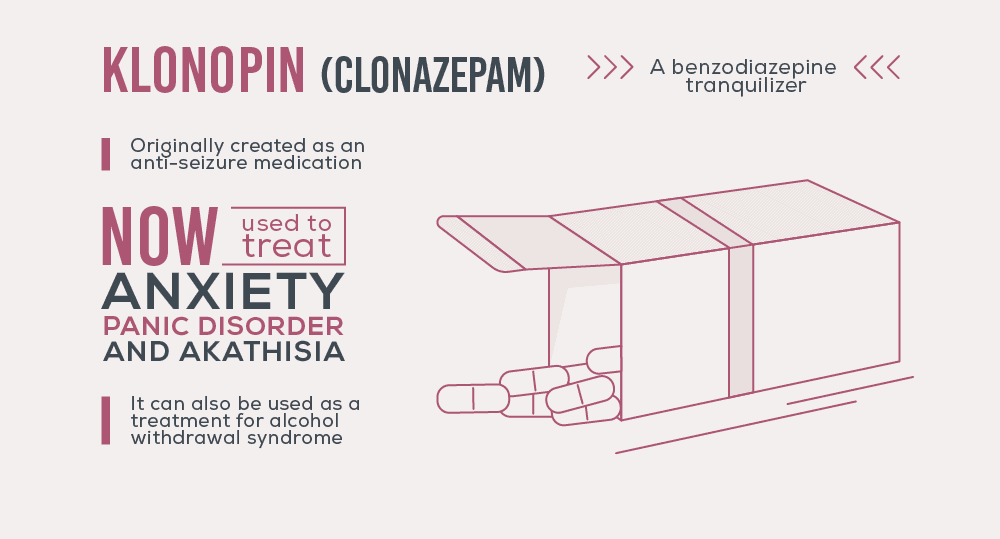 10. Klonopin (clonazepam) – This benzodiazepine tranquilizer was originally created as an anti-seizure medication, although it is now also used to treat anxiety, panic disorder, and akathisia. It can also be used as a treatment for alcohol withdrawal syndrome. Klonopin is popular as a drug of abuse because it acts very quickly, usually within one hour, and the effects last up to 12 hours.
10. Klonopin (clonazepam) – This benzodiazepine tranquilizer was originally created as an anti-seizure medication, although it is now also used to treat anxiety, panic disorder, and akathisia. It can also be used as a treatment for alcohol withdrawal syndrome. Klonopin is popular as a drug of abuse because it acts very quickly, usually within one hour, and the effects last up to 12 hours. 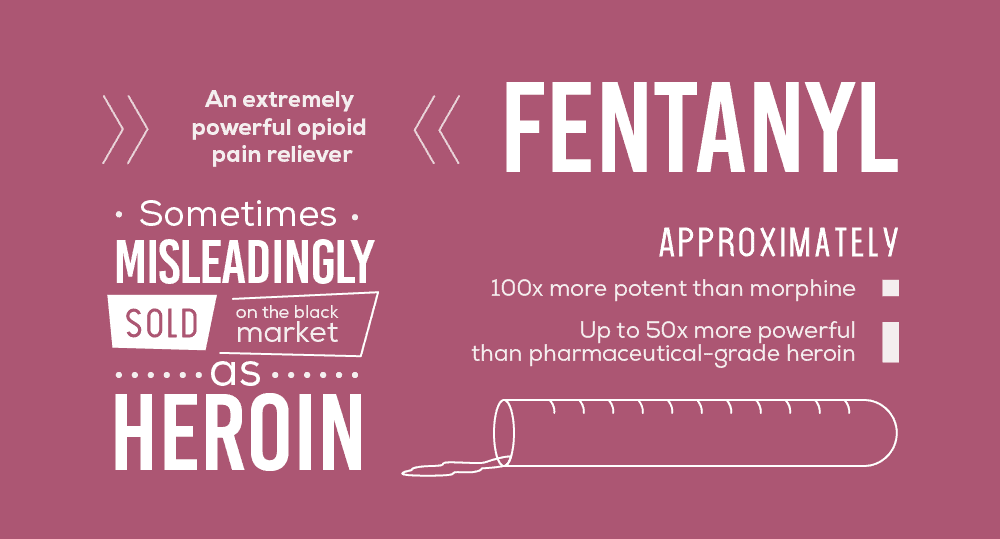 9. Fentanyl – Fentanyl is an extremely powerful opioid pain reliever, approximately 100 times more potent than morphine and up to 50 times more powerful than pharmaceutical-grade heroin. Fentanyl is especially dangerous because it is sometimes misleadingly sold on the black market as heroin, and due to its much greater potency, it leads to many more deaths due to respiratory failure.
9. Fentanyl – Fentanyl is an extremely powerful opioid pain reliever, approximately 100 times more potent than morphine and up to 50 times more powerful than pharmaceutical-grade heroin. Fentanyl is especially dangerous because it is sometimes misleadingly sold on the black market as heroin, and due to its much greater potency, it leads to many more deaths due to respiratory failure. 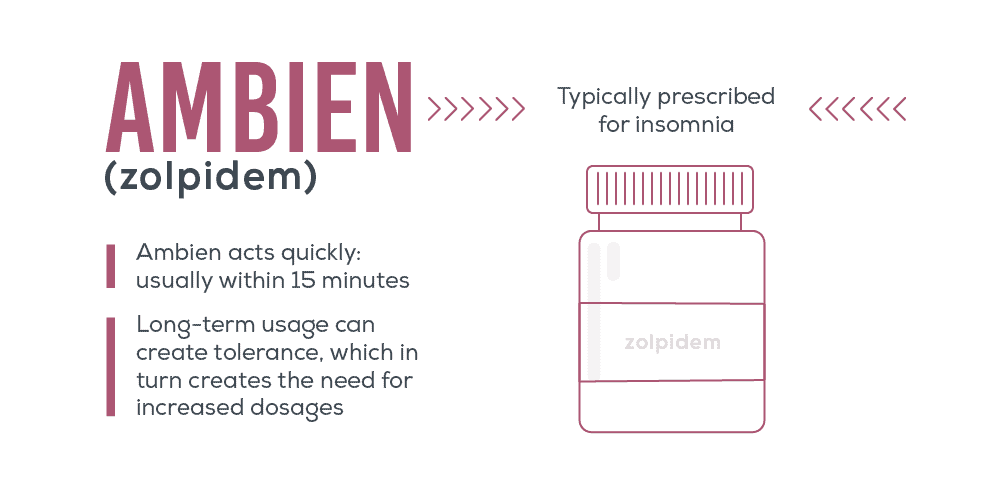 8. Ambien (zolpidem) – Typically prescribed for insomnia, Ambien acts quickly – usually within 15 minutes. Long-term usage of the drug can create a tolerance, which in turn creates the need for increased dosages. At these higher doses, some users report a reduction in their anxiety levels and a mild euphoric “high”. In 2013, United States Foods and Drug Administration mandated that the drug’s manufacturer cut the recommended dosages, particularly for women, because of next-day impairment and such problems as driving and performing other actions while sleeping.
8. Ambien (zolpidem) – Typically prescribed for insomnia, Ambien acts quickly – usually within 15 minutes. Long-term usage of the drug can create a tolerance, which in turn creates the need for increased dosages. At these higher doses, some users report a reduction in their anxiety levels and a mild euphoric “high”. In 2013, United States Foods and Drug Administration mandated that the drug’s manufacturer cut the recommended dosages, particularly for women, because of next-day impairment and such problems as driving and performing other actions while sleeping. 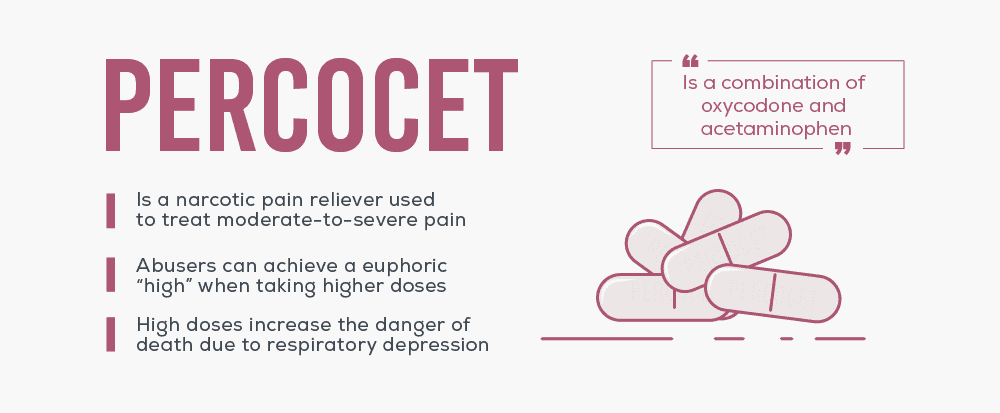 7. Percocet – This is a combination of oxycodone and acetaminophen (Tylenol) that is used as a narcotic pain reliever to treat moderate-to-severe pain, intended for short-term use. As with other opioid pain relievers, abusers can achieve a euphoric “high” when taking higher doses of Percocet. As with other opioids, this also increases the danger of death because of respiratory depression. The Tylenol ingredient increases the effects of the oxycodone, but it does not magnify the abuse potential. It does, however, greatly raise the chances of liver damage.
7. Percocet – This is a combination of oxycodone and acetaminophen (Tylenol) that is used as a narcotic pain reliever to treat moderate-to-severe pain, intended for short-term use. As with other opioid pain relievers, abusers can achieve a euphoric “high” when taking higher doses of Percocet. As with other opioids, this also increases the danger of death because of respiratory depression. The Tylenol ingredient increases the effects of the oxycodone, but it does not magnify the abuse potential. It does, however, greatly raise the chances of liver damage. 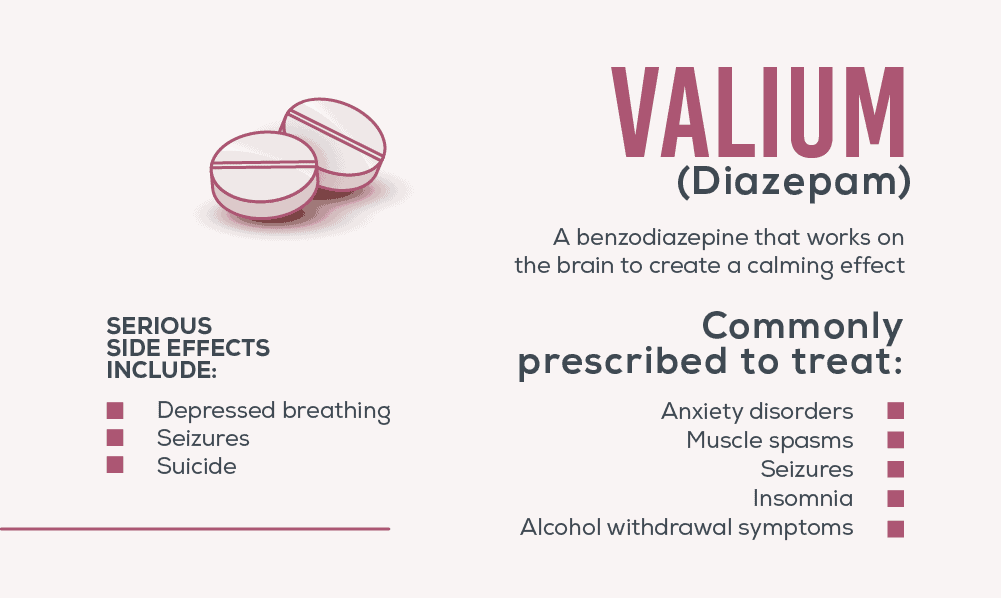 6. Valium (diazepam) – Commonly prescribed to treat anxiety disorders, muscle spasms, seizures, insomnia, restless leg syndrome, and alcohol withdrawal symptoms, Valium is a benzodiazepine that works on the brain to create a calming effect. As with other benzodiazepines, Valium can create a tolerance and addiction that can be dangerous – even life-threatening – when the drug is abruptly discontinued. Serious side effects include problems with coordination, depressed breathing, seizures, and even suicide. After discontinuation of the drug, cognitive problems can last over six months.
6. Valium (diazepam) – Commonly prescribed to treat anxiety disorders, muscle spasms, seizures, insomnia, restless leg syndrome, and alcohol withdrawal symptoms, Valium is a benzodiazepine that works on the brain to create a calming effect. As with other benzodiazepines, Valium can create a tolerance and addiction that can be dangerous – even life-threatening – when the drug is abruptly discontinued. Serious side effects include problems with coordination, depressed breathing, seizures, and even suicide. After discontinuation of the drug, cognitive problems can last over six months. 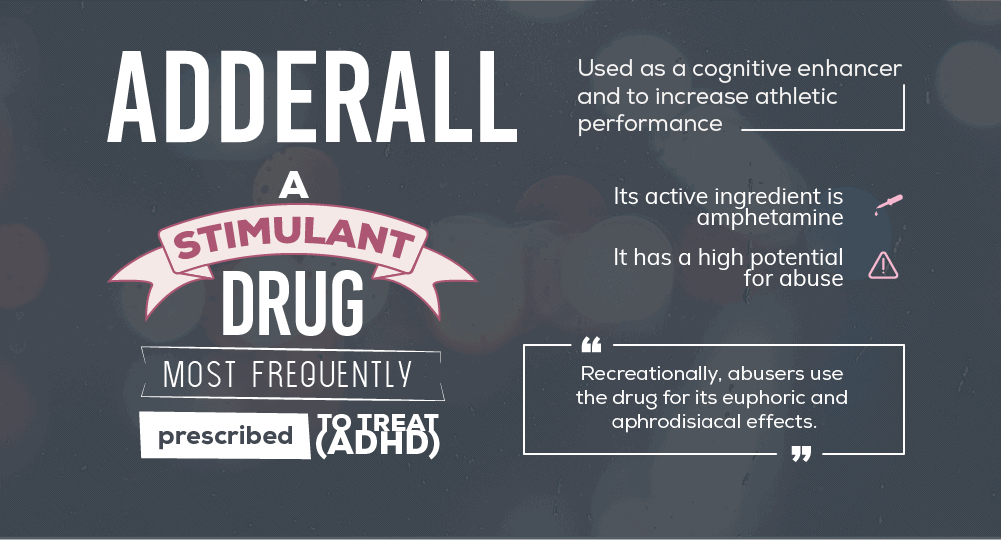 5. Adderall – Adderall is a stimulant that is most frequently prescribed to treat attention deficit hyperactivity disorder (ADHD). It also has uses as a cognitive enhancer and to increase athletic performance, although the latter use is typically banned in organized sports. Recreationally, abusers use the drug for its euphoric and aphrodisiacal effects. At high doses, Adderall can result in psychosis, tachycardia, convulsions, and coma.
5. Adderall – Adderall is a stimulant that is most frequently prescribed to treat attention deficit hyperactivity disorder (ADHD). It also has uses as a cognitive enhancer and to increase athletic performance, although the latter use is typically banned in organized sports. Recreationally, abusers use the drug for its euphoric and aphrodisiacal effects. At high doses, Adderall can result in psychosis, tachycardia, convulsions, and coma. 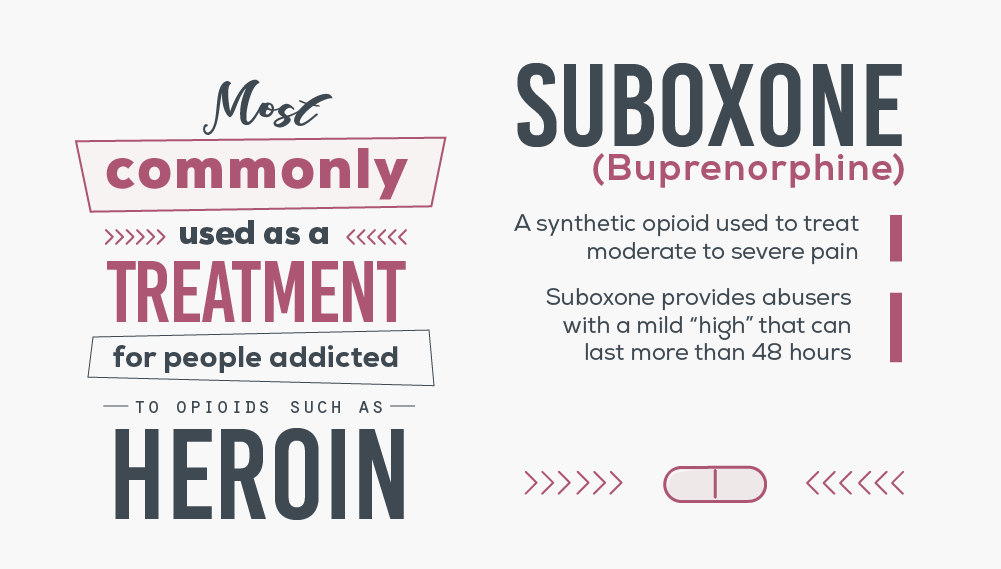 4. Suboxone (buprenorphine) – This is a synthetic opioid used to treat moderate to severe pain. Most commonly, Suboxone is used as a treatment for people addicted to actual opioids such as heroin. Even though it is a synthetic, the side effects of Suboxone use/abuse are similar to those of actual opioids – dizziness, cognitive impairment, memory loss, extreme drowsiness, and at higher doses, possible death from respiratory depression. Suboxone provides abusers with a mild “high” that can last more than 48 hours. Because the high is less than that of “regular” opiates, it is often used in combination with alcohol or benzodiazepines.
4. Suboxone (buprenorphine) – This is a synthetic opioid used to treat moderate to severe pain. Most commonly, Suboxone is used as a treatment for people addicted to actual opioids such as heroin. Even though it is a synthetic, the side effects of Suboxone use/abuse are similar to those of actual opioids – dizziness, cognitive impairment, memory loss, extreme drowsiness, and at higher doses, possible death from respiratory depression. Suboxone provides abusers with a mild “high” that can last more than 48 hours. Because the high is less than that of “regular” opiates, it is often used in combination with alcohol or benzodiazepines. 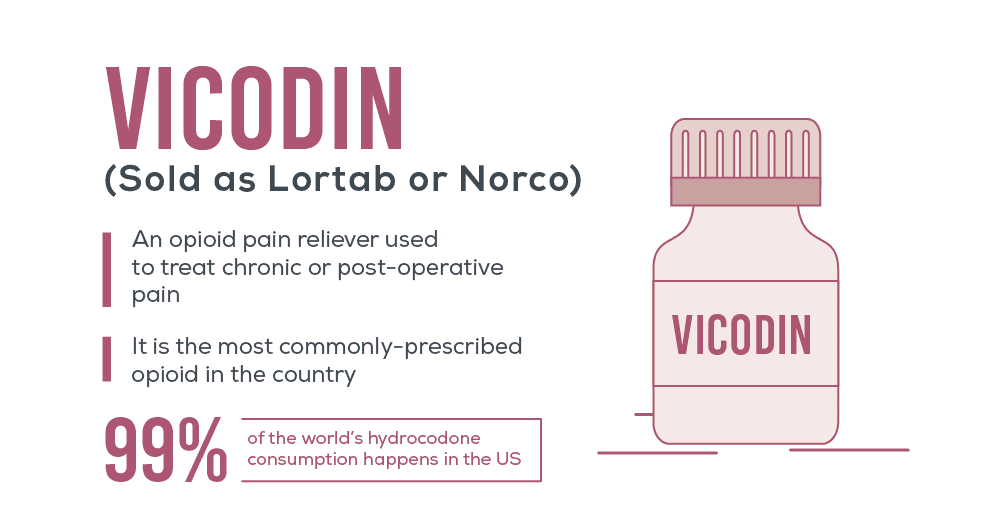 3. Vicodin (hydrocodone/acetaminophen) – Also sold as Lortab or Norco, this is an opioid pain reliever used to treat chronic or post-operative pain. Vicodin does not actually decrease the source of the pain. Instead, it changes the user’s perception of pain. That change in perception is what makes it so sought-after as a drug of abuse. Some of the desirable effects include a heightened sense of one’s own well-being and reduce stress and worry. 99% of the world’s hydrocodone consumption happens in the United States. It is the most commonly prescribed opioid in the country, and, according to the Drug Enforcement Agency, it is the second-most encountered opioid medication found in submitted evidence.
3. Vicodin (hydrocodone/acetaminophen) – Also sold as Lortab or Norco, this is an opioid pain reliever used to treat chronic or post-operative pain. Vicodin does not actually decrease the source of the pain. Instead, it changes the user’s perception of pain. That change in perception is what makes it so sought-after as a drug of abuse. Some of the desirable effects include a heightened sense of one’s own well-being and reduce stress and worry. 99% of the world’s hydrocodone consumption happens in the United States. It is the most commonly prescribed opioid in the country, and, according to the Drug Enforcement Agency, it is the second-most encountered opioid medication found in submitted evidence. 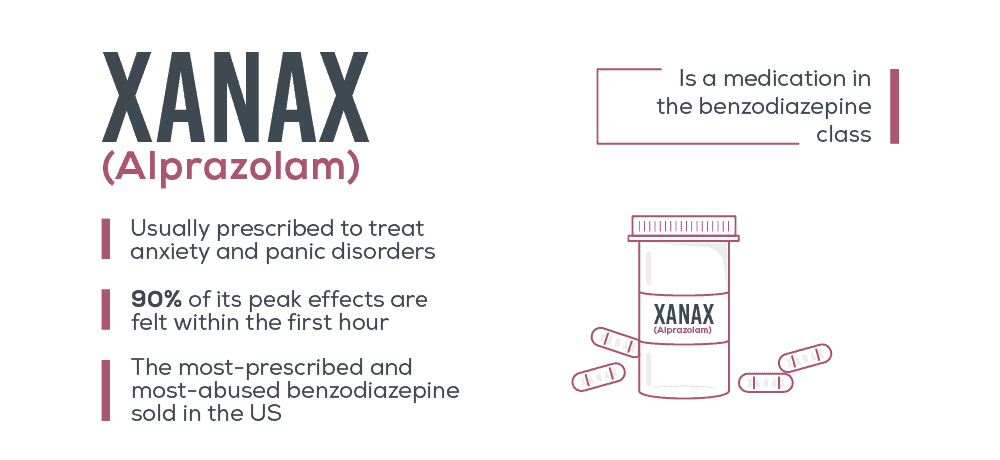 2. Xanax (alprazolam) – Xanax is a medication in the benzodiazepine class usually prescribed to treat various anxiety and panic disorders. In 2010, it was the twelfth-most prescribed medicine in the United States. It has a very fast onset – 90% of its peak effects are felt within the first hour. Because of that rapid onset and because of its long-half-life, alprazolam is both the most-prescribed and most-abused benzodiazepine sold in the US.
2. Xanax (alprazolam) – Xanax is a medication in the benzodiazepine class usually prescribed to treat various anxiety and panic disorders. In 2010, it was the twelfth-most prescribed medicine in the United States. It has a very fast onset – 90% of its peak effects are felt within the first hour. Because of that rapid onset and because of its long-half-life, alprazolam is both the most-prescribed and most-abused benzodiazepine sold in the US. 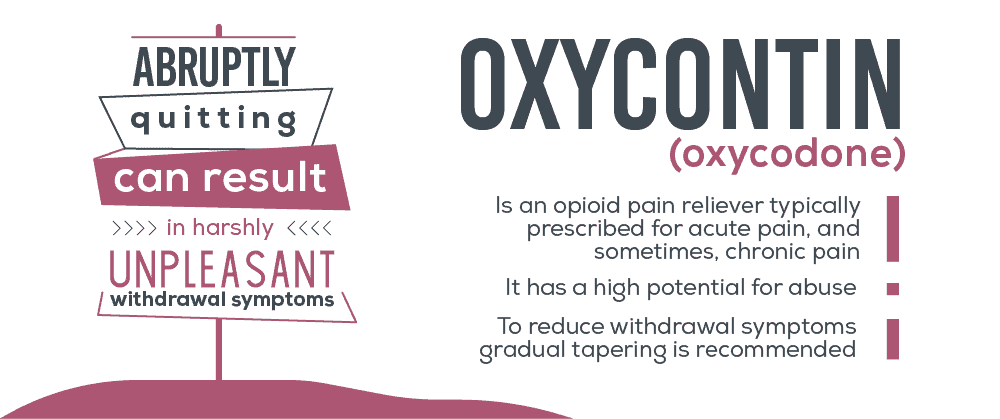 1. OxyContin (oxycodone) – OxyContin is an opioid pain reliever typically prescribed for acute pain, and sometimes, chronic pain. More studies are beginning to show that it is a viable alternative for morphine when treating cancer pain. As with other opioids, OxyContin carries a high potential for abuse, and to reduce withdrawal symptoms, it is often advised that it should be discontinued gradually with a tapering off of the dosages, rather than abrupt cessation. This is especially true when the drug has been taken over a long period for recreationally at greater-than-prescribed doses. Prescription medication abuse is a real and growing problem in the United States. Not all people become dependent on prescription drugs do so because of recreational misuse. It is entirely possible to become accidentally dependent, simply by using the drug for too long a period of time. Because abruptly quitting some of these drugs – especially benzodiazepine – can result in harshly unpleasant withdrawal symptoms that can even be potentially hazardous, it is always recommended that detoxification and withdrawal take place under the supervision of qualified medical personnel.
1. OxyContin (oxycodone) – OxyContin is an opioid pain reliever typically prescribed for acute pain, and sometimes, chronic pain. More studies are beginning to show that it is a viable alternative for morphine when treating cancer pain. As with other opioids, OxyContin carries a high potential for abuse, and to reduce withdrawal symptoms, it is often advised that it should be discontinued gradually with a tapering off of the dosages, rather than abrupt cessation. This is especially true when the drug has been taken over a long period for recreationally at greater-than-prescribed doses. Prescription medication abuse is a real and growing problem in the United States. Not all people become dependent on prescription drugs do so because of recreational misuse. It is entirely possible to become accidentally dependent, simply by using the drug for too long a period of time. Because abruptly quitting some of these drugs – especially benzodiazepine – can result in harshly unpleasant withdrawal symptoms that can even be potentially hazardous, it is always recommended that detoxification and withdrawal take place under the supervision of qualified medical personnel.
How to Identify Addiction
If someone has been taking prescription medications for a medical condition, it can be difficult to tell if they’re addicted. However, it’s important to understand the road to addiction for prescribed drugs. It’s the only way to prevent the problem or stop it before it gets worse. When a person starts abusing a prescribed medication, they may take it more often than prescribed. They run out sooner than expected and must contact their doctor for a refill. If the doctor won’t give them more of the medicine, they may go to another doctor or ask friends if they have pills of the same medication. The person may become irritable if they can’t take enough of the medication, especially if they believe they need it for pain. They start to look for other ways to get the medication. The person may begin to find dealers on the street who carry prescription medications. They’ll have to pay more just to get a few doses. Just like with any illicit drug, abuse soon turns into addiction. The brain gets used to having it in the system and will sound alarms when the person runs out. Withdrawal symptoms often lead the person to get more of the drug because they are uncomfortable or even downright painful. Once the person has gotten to this point, they aren’t just abusing drugs. They have become addicted and cannot stop using even if they want to.
“We accept many health insurance plans. You can get your life back in order with our outpatient program today!”
Prescription Drugs Combined with Illicit Drugs and Alcohol
When it gets too difficult to get the prescription drugs or too expensive, the next step for many is to turn to illicit drugs. For example, heroin isn’t too far of a step from OxyContin or morphine. They are all opioids and have similar effects on a person. Heroin is much cheaper, which is the case with several street drugs. They are also often more potent, so when a prescription drug stops providing that high, it’s easy to switch to something that will give it. Some users don’t switch from prescription drugs to street drugs. Instead, they combine them to increase the high they are getting. It’s one reason people will drink alcohol with their prescription medications. Others just don’t think about the dangers of combining the two substances. When a user combines the prescribed medication with a street drug, the danger increases dramatically. Sometimes, they may use the prescription drug to reduce the effects of coming down from the street drug. It counteracts the withdrawal symptoms. A prime example of this situation is when a person takes a muscle relaxer to come down from cocaine or meth. Heroin users may turn to Xanax to reduce the likelihood of experiencing hallucinations or paranoia.
Street Names for Prescription Medications
These prescription drugs have street names so others don’t know what is being discussed when a person is looking to buy something. They may go by initials or shortened versions of the name or by the color of the pill. It’s important to know the street names of these medications in case you suspect a loved one is using.
- OxyContin – Oxy, Hillbilly heroin, killers, blue, OxyCotton
- Xanax – Xannies, Handlebars, Z-bars, Totem poles, Blue footballs
- Vicodin – Hydro, Loris, Vikes, Vics
- Suboxone – Stop signs, Bupe, Boxes, Oranges
- Adderall – Beanies, double trouble, uppers, dexies, Christmas trees, black beauties
- Valium – Vs, downers, Foofoo, Benzos, Old joes
- Percocet – Percs, C, Oxycet
- Ambien – no-gos, zombie pills, tic-tacs, sleepeasy, A-minus
- Fentanyl – China town, friend, goodfellas, jackpot, king ivory
- Klonopin – k-pins, downers, tranks, benzos
These are just a few of the names you may hear when one of these drugs is being talked about. Additionally, there are other names when a combination of drugs is being sought. Heroin may be mixed with some of these drugs or cocaine, which creates an entirely different name for dealers.
Overcoming Prescription Drug Addiction
You may wonder if it’s easier to stop using prescription medications than street drugs. After all, doctors wouldn’t prescribe them if they were all that bad, right? This is a common myth about prescribed medications. In fact, they are even more dangerous because people often don’t take them seriously. When a person becomes addicted to a substance, it can be difficult to overcome that addiction. They will need to go to treatment. They may require detox if they are still using. For those who have stopped using, they will need therapy to understand the underlying reason for the addiction. Many drug treatment centers will treat people with prescription drug addiction. The one main difference between it and other addictions is dealing with the original reason for using the medications. A doctor may need to find alternative treatment for a medical condition. If the problem was a mental health disorder such as ADHD, they will need to find another medication which is less addictive. Since many addictions from prescribed drugs come from people who took it for specific reasons, treatment can be a little more complicated. Even if a person takes the medication as directed and doesn’t appear to be abusing it or addicted, they are warned to not stop taking it all at once. Instead, many doctors will wean the patient off the medication by reducing the dosage or frequency or both. For those who have become dependent, it is often even more important to wean them off so they won’t experience the dramatic side effects. Managing detox correctly helps reduce the risk of relapse, which can occur with prescription medications just as with any other addictive substance. Once treatment has been completed and the person is recovering, it’s important they are vigilant about any other medications which are prescribed by a doctor. They need to relay the information about their history so the doctor will know to monitor any medication they prescribe which could be addictive.
Getting Treatment for Addiction
If you or someone you know is taking more prescription medications than what has been prescribed or other signs of addiction are present, you may need to seek professional treatment. Ashwood Recovery at Northpoint provides a comprehensive program for drug addiction, whether its for prescribed medication or other substances. We provide an in-depth assessment to determine if you’re a good candidate for our outpatient program. If we feel you would be better served by an inpatient program, we’ll provide you with a recommendation. Outpatient programs allow addicts to receive the essential treatment they need to begin recovery while still meeting their other obligations. It’s often the ideal or even the only choice for people with families or jobs. With intensive outpatient rehab, you attend treatment three times a week for three hours per session. You’ll go through individual counseling and group therapy to help you deal with your addiction. We also offer other resources to help you win this battle, including trauma resolution, motivational interviewing and various techniques. Ashwood Recovery understands that treating drug addiction isn’t a one-size-fits-all approach. It must be tailored to your needs and situation to find what works for you. Ashwood Recovery utilizes a holistic approach to drug addiction treatment, which means we try to avoid turning to medication whenever possible. This helps to reduce the risk that you’ll develop a secondary addiction or relapse. You can come in and ask questions or tour the facility to help you feel comfortable about coming to Ashwood Recovery for help. With the right resources, you can win this battle and get your life back. If you or someone you care about has a problem with the abuse of prescription medications, you owe it to yourselves and your future to contact professional addiction specialists today. Give us a call to find out more.
What Did you Think About This Blog?
Give it a Rating!
[kkstarratings]


